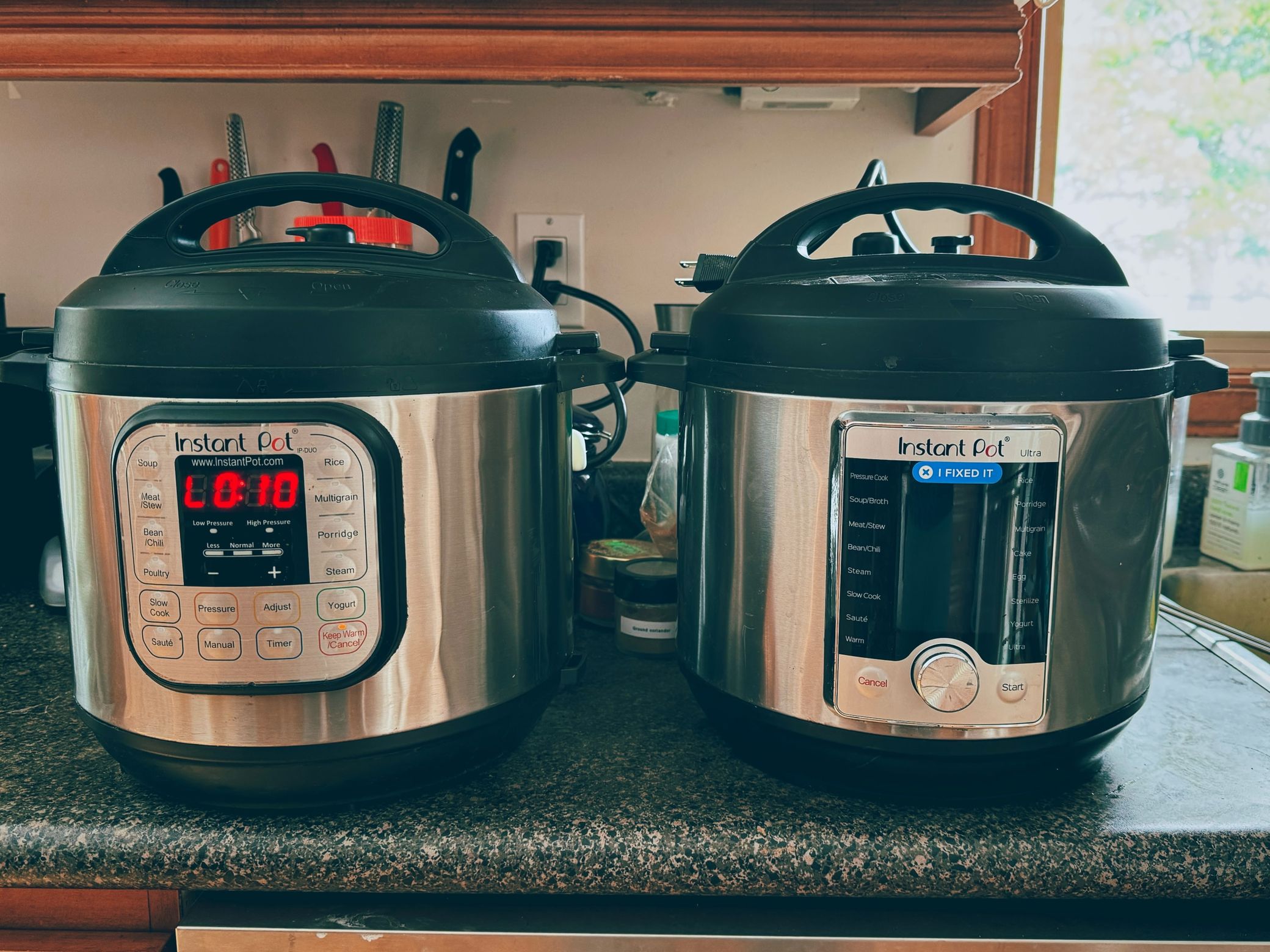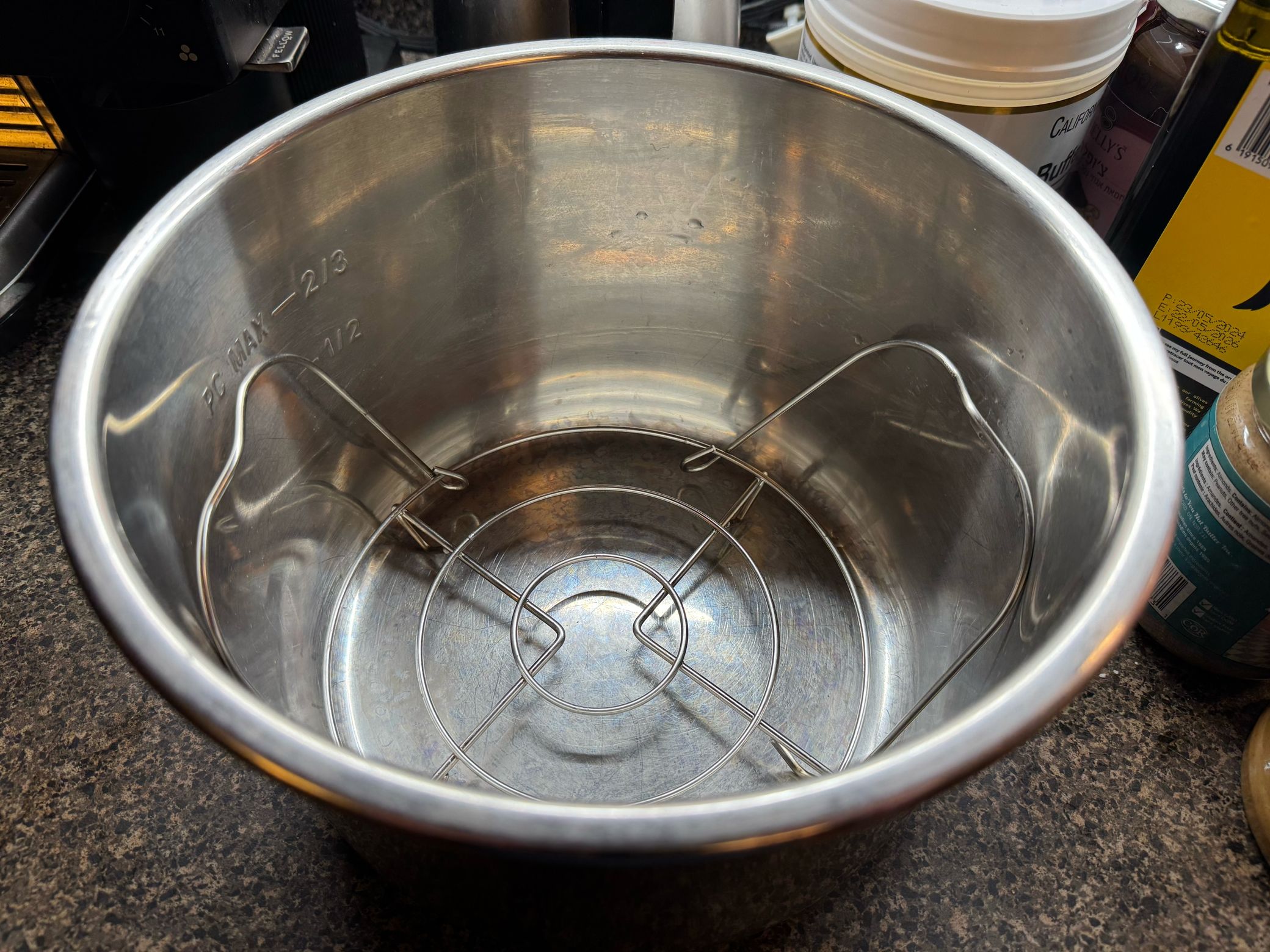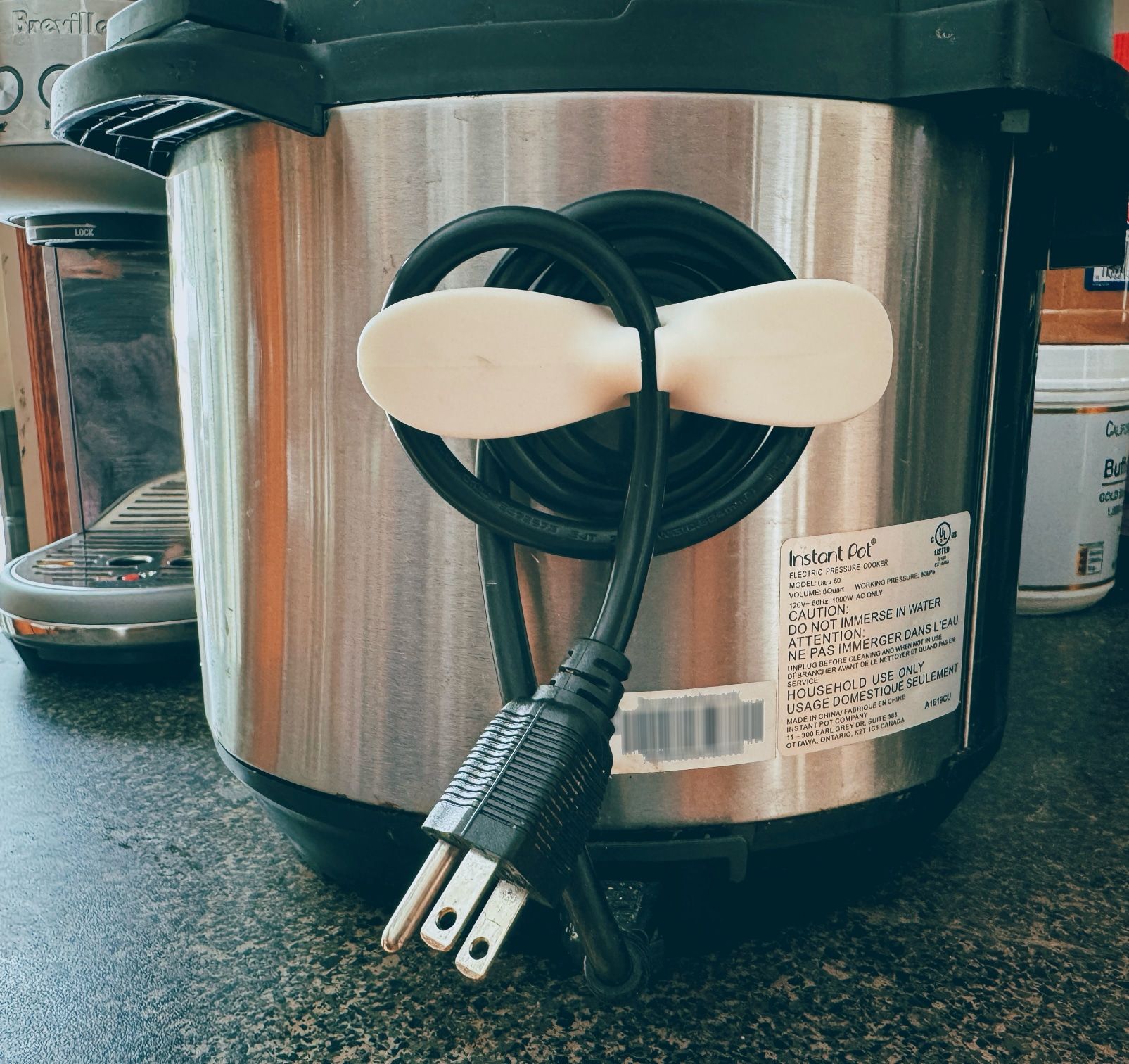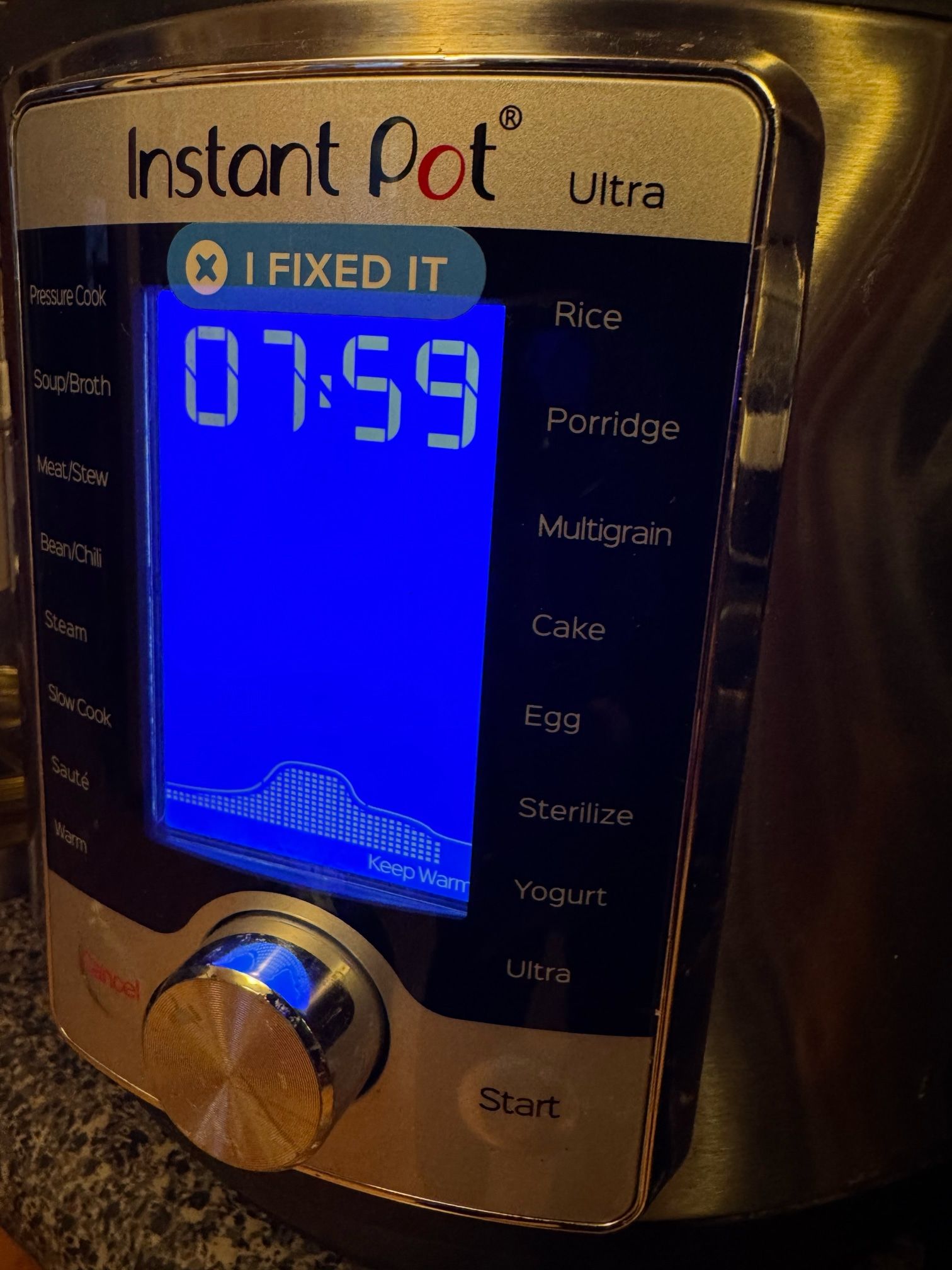The Instant Pot is an electric pressure cooker. It's one of the most versatile and frequently used items in our kitchen. In fact, it’s such a useful gadget that we actually have two of them (we don’t have two of any other appliance).

Because it's a pressure cooker, cooking times are fast—much faster than on a stovetop. It’s mostly a set-it-and-forget-it type of appliance. You just put your food in, set the desired duration, and leave it. It'll beep when it's done. You can come back right then or hours later, and the food will be kept warm for you.
It’s a really simple device. You just plug it in, and there’s a very straightforward control panel. When you first look at it, it looks impressive or a bit daunting — there are many buttons and modes. Really, though, you only need the one mode: Pressure cook on high. We use that for everything, adjusting the duration for whatever we happen to be cooking or reheating.
We use it to make beans, eggs, and rice multiple times per week. We even use it to make yogurt (I guess that's one other mode that we do use). I would say well over half the meals in our house are made using the Instant Pot. It's easy and safe enough to use that my ten-year old handles it confidently.
For tasks like cooking hard-boiled eggs or rice — things that can be tricky on a stovetop and require monitoring — the Instant Pot delivers perfect results every single time. It’s very consistent. You set the duration according to whatever you're cooking, not the amount. So it's five minutes for one hard-boiled egg, and five minutes for a dozen. Or three minutes (high pressure) for a cup of rice, and the same three minutes for four cups of rice (that would be a lot of rice).
When you use the pot to make soup or curry, you can sauté your food right in the pot at the start of cooking, and then switch it to pressure cooking mode. That way, you only have the insert to clean — no need to dirty another pan.
That insert is made of stainless steel, so it's dishwasher safe and also easy to clean by hand. It’s the same quality as a stovetop pot, and you can scrub it aggressively if needed — but you usually won’t have to.

I like using the Instant Pot for heating leftovers or frozen soup. It has a trivet (like a little "stand" that goes in the pot). I put the trivet in, put a bit of water in, and then place a bowl with my leftovers over the trivet. I then set it on high pressure for five to seven minutes. When I come back, the food is perfect.
By the way, when I say "five minutes" and such, that's total time under high pressure. The pot also takes time to get to pressure, and then it takes more time to release the pressure (if you're just letting it release naturally, rather than quick-releasing). So "five minutes" of high-pressure cooking time is really more like 25 minutes start to finish.
Some kitchen gadgets come with endless attachments, but the Instant Pot has only the insert and the lid. One thing I do wish it had is better cable management. I solved this by getting a cable organizer from Amazon to wrap the cord.

It's a simple, reliable gadget. Our first unit is about eight years old. We’ve used it multiple times a week for all those years, and it’s still going strong. We haven’t had to replace or fix anything.
Our second unit, however, was thrifted for just $13. Shortly after getting it, the pressure sensor stopped working. It would heat up and keep heating without stopping -- it was a little scary (a lot of pressure seemed to build up). I didn't want to throw it away, though — I wanted to fix it, and I was surprised by how easy that was. I googled the issue, identified the problem as a faulty pressure sensor, and found a replacement part on eBay (the manufacturer doesn't offer parts, which is a shame). All I needed to fix it was a common screwdriver—no soldering iron needed. It's been more than a year since, and it's been working perfectly.

Because it's such a popular gadget, there are a lot of resources for it. It's easy to find recipes online, and there are also entire cookbooks. Whatever you want to make in it, you can probably find a recipe or a cooking chart showing you tried-and-true cooking times.

The surprise
My first surprise is just how often we use both our Instant Pots at the same time — this happens multiple times per week. When I got the second one, I thought it might just be a backup. But at $13, it was worth the gamble, and I’m glad we have two.
My second surprise the repairability. The fact that I could fix it myself at home with a cheap eBay part is amazing. The straightforward, low-tech design made it simple to open up and repair.
The company behind the Instant Pot is a cautionary business tale about trying to grow too fast — but that is a story for another time. The core product is excellent. If you already have an Instant Pot, you've probably just been nodding along. But if you don’t, I highly recommend getting one. It will likely become one of the most useful tools in your kitchen.


